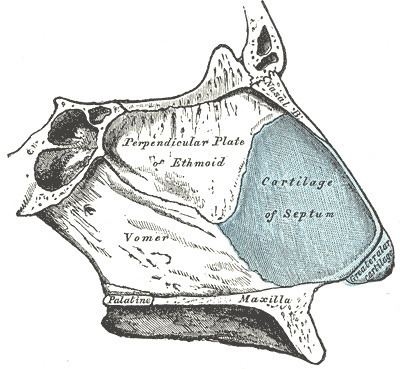 | ||
Kiesselbach's plexus, which lies in Kiesselbach's area, Kiesselbach's triangle, or Little's area, is a region in the anteroinferior part of the nasal septum where four arteries anastomose to form a vascular plexus. The arteries are:
Contents
Significance
Ninety percent of nose bleeds (epistaxis) occur in Little's area, as it is exposed to the drying effect of inspiratory current.
History
Kiesselbach's plexus is named after Wilhelm Kiesselbach (1839–1902), a German otolaryngologist who published a paper on the area in 1884.
James L. Little, an American surgeon, first described the area in 1879. Little described the area as being "about half an inch .... from the lower edge of the middle of the column [septum]."
References
Kiesselbach's plexus Wikipedia(Text) CC BY-SA
